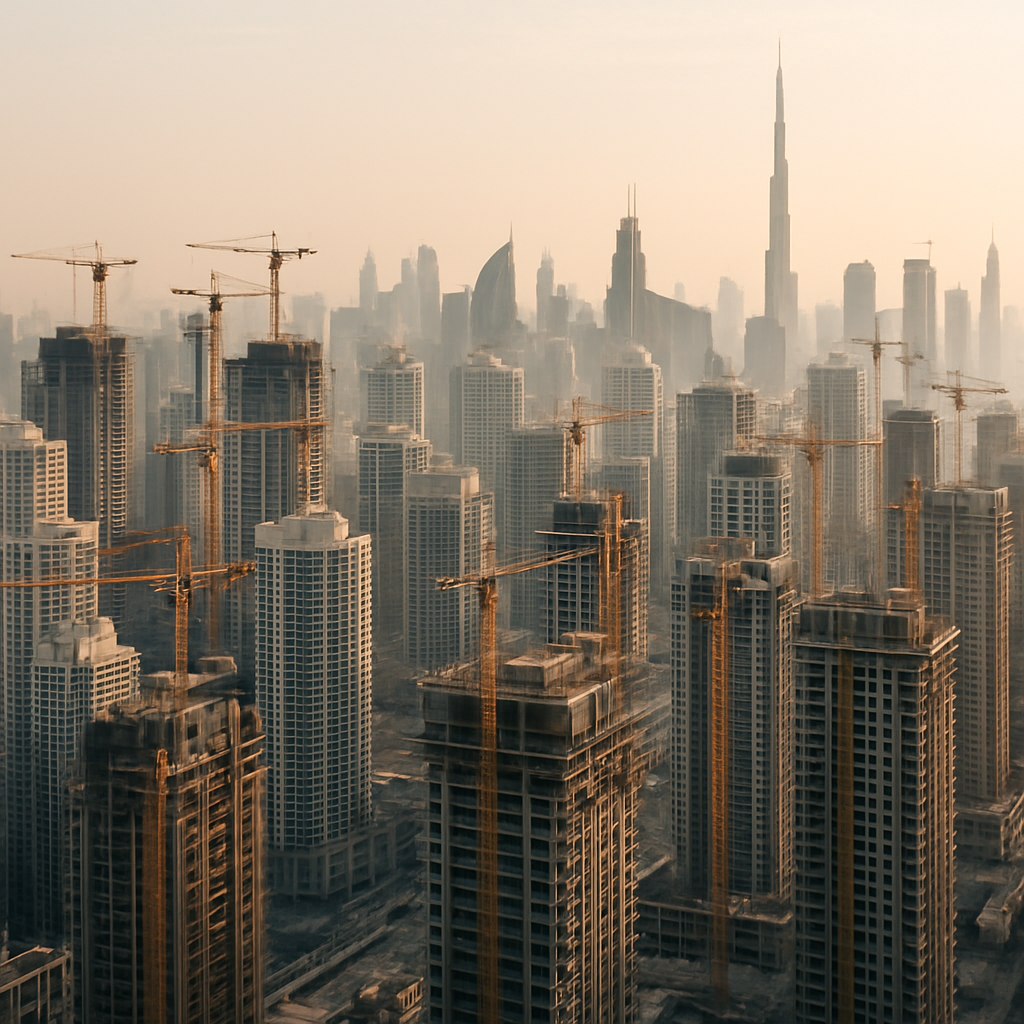Too Many Projects, Too Little Clarity: How to Navigate Dubai’s Overcrowded Real Estate Market



The Overwhelm of Choice
If you’ve been looking at Dubai real estate recently, you’ve probably felt it: the market is crowded with new launches, flashy marketing campaigns, and promises of record returns. In 2023 alone, Dubai registered over 120,000 property transactions, a historic high. Every month, dozens of new projects are announced across the city, each claiming to be “the next big opportunity.”
But here’s the challenge — with so many choices, how do you know which projects are truly profitable and which are just noise? For many investors and end-users, the abundance of options has become overwhelming, making decision-making slower, riskier, and often less profitable.

Why Navigating Dubai Real Estate Is So Hard
1. Too Many Developers, Varying Track Records
Dubai has hundreds of active developers, from global names like Emaar and DAMAC to smaller, lesser-known firms. While some have decades of proven performance, others are new entrants with no history of delivering projects on time or achieving promised returns.
2. Marketing vs. Reality
Billboards and glossy brochures highlight rooftop pools, futuristic designs, and flexible payment plans. But marketing rarely mentions average resale performance, rental yields, or the true cost of ownership.
3. Information Overload
The Dubai Land Department publishes transactional data, but interpreting 1.5 million+ historical sales records is not something an average buyer can do. On top of that, media reports, brokers, and online listings all provide fragmented, sometimes contradictory information.
4. Emotional Decision-Making
When overwhelmed by options, many buyers default to emotion: choosing the project with the flashiest design, or trusting the most persuasive salesperson. This often leads to overlooking key numbers like ROI, yield, and price momentum.
Risks of Making Decisions Without Clarity
- Underperforming Investments: Without proper comparison, you might buy into a project offering only 3–4% yields, while others in the same budget deliver 7–8%.
- Liquidity Traps: Properties in less attractive projects can take months longer to resell, especially if demand is weak.
- Hidden Costs: Choosing a project based only on advertised price may expose you later to high service charges or poor resale performance.
- Missed Opportunities: By getting stuck in analysis paralysis, investors often delay entry and miss strong phases of market momentum.
Practical Tips for Cutting Through the Noise
1. Focus on District First, Project Second
Ask yourself: Which area has long-term demand? For example, Dubai Hills Estate and JVC are delivering above-average rental yields (7–8%) thanks to family-friendly amenities and community infrastructure. Once you’ve identified a strong area, filter projects within that district.
2. Benchmark Against Market Averages
Always compare a project’s price per square foot against both the developer’s other projects and the district average. If a project is priced 25% above the area norm, demand must justify the premium — otherwise, risk of slower appreciation is high.
3. Check Rental Demand Indicators
Look at transaction volume and average rents in the area. For instance, Business Bay recorded over 10,000 transactions in 2023, proving liquidity and investor demand, whereas some outlying areas saw fewer than 500.
4. Use Data, Not Just Brochures
Price momentum, ROI, and developer track record are better indicators of future performance than marketing images. Look at how prices moved in the past three years and whether rental yields are stable or declining.
What the Numbers Reveal
- Momentum: Projects in Dubai Marina grew by 15% in value in 2023, but in Q1 2024 growth slowed to under 5%, suggesting maturity. In contrast, Arjan saw over 20% growth YoY, highlighting its rising demand.
- Rental Yields: Apartments in JVC and Dubai Sports City average 7–8% yields, among the best in the city. Villas in Palm Jumeirah, though prestigious, deliver only around 4–5%.
- Developer Reliability: Emaar and Nakheel projects typically appreciate 10–15% faster post-handover compared to smaller developers, due to brand trust and strong resale demand.
- Price Gaps: The average price per sq.ft. in Downtown Dubai is AED 2,250, but new launches in Business Bay at AED 2,200/sq.ft. are aggressively priced, narrowing the gap between prime and secondary districts.
These insights show why buyers struggle: without structured analysis, it’s nearly impossible to see through the noise and focus on truly valuable opportunities.
From Overwhelm to Clarity
Dubai’s real estate market is full of opportunities — but also full of distractions. With hundreds of projects launching every year, the real challenge isn’t finding options; it’s knowing which ones actually deliver value.
To avoid these risks and instantly access verified projects with AI-based ratings on Price, Momentum, and Attractiveness, you can use Top Real Estate Dubai. It saves time, reduces risks, and helps you focus only on the most suitable investment opportunities — without drowning in information overload.


Overwhelmed by too many projects?
Get the real score of any project in Dubai





